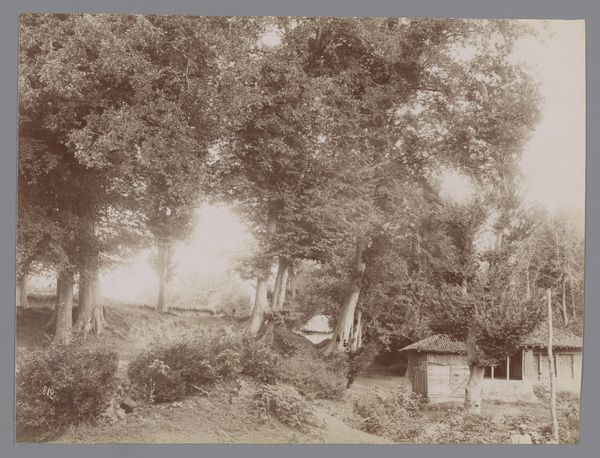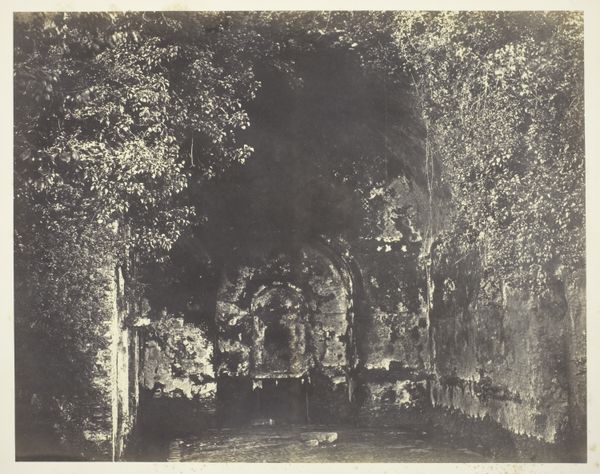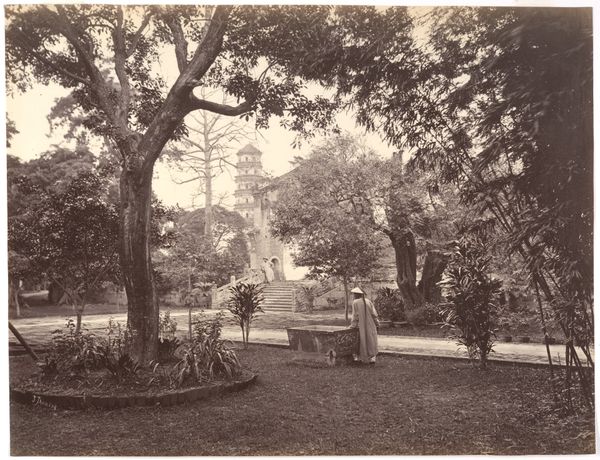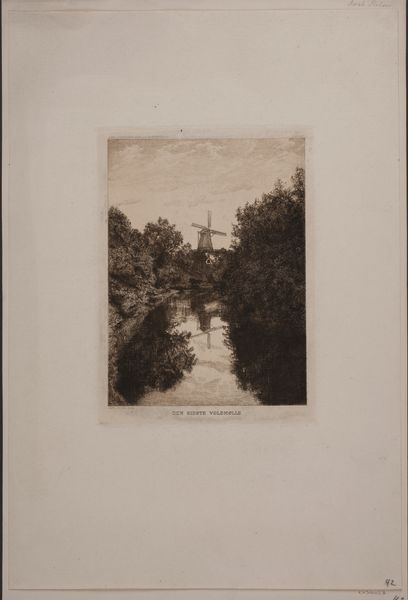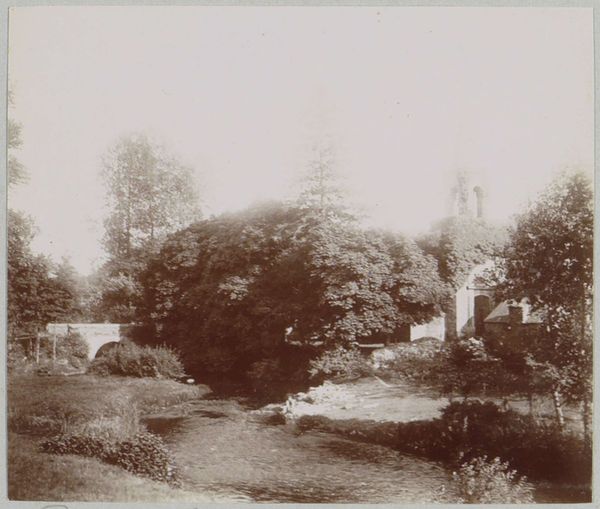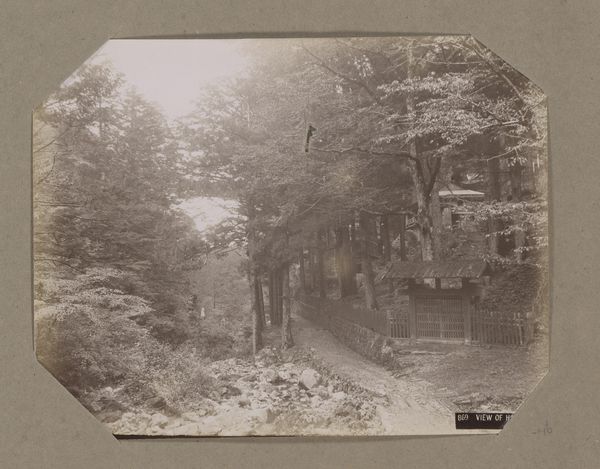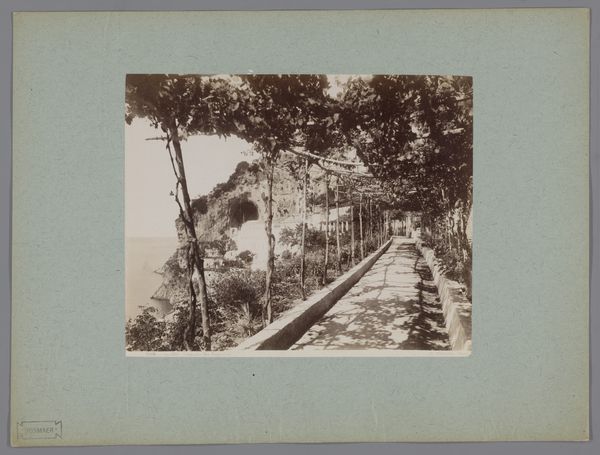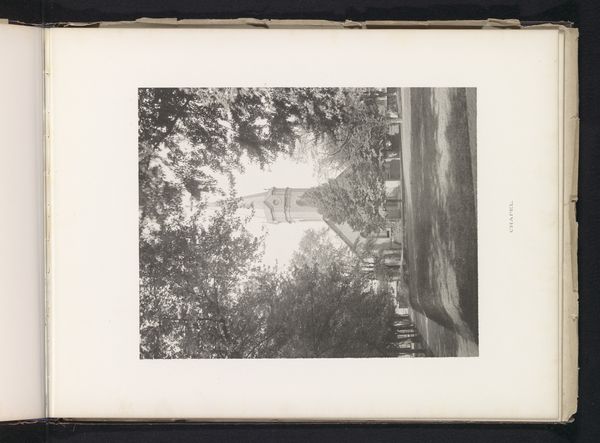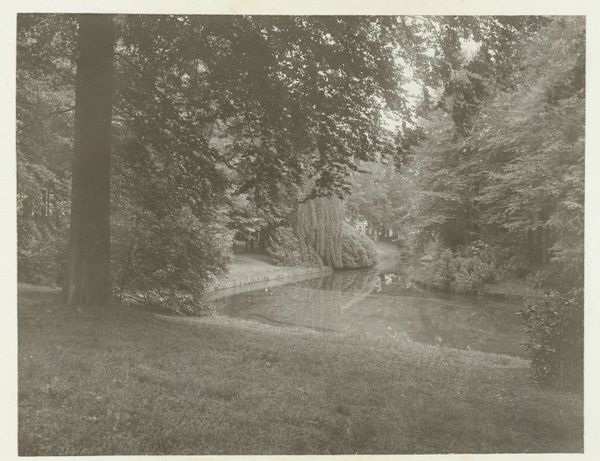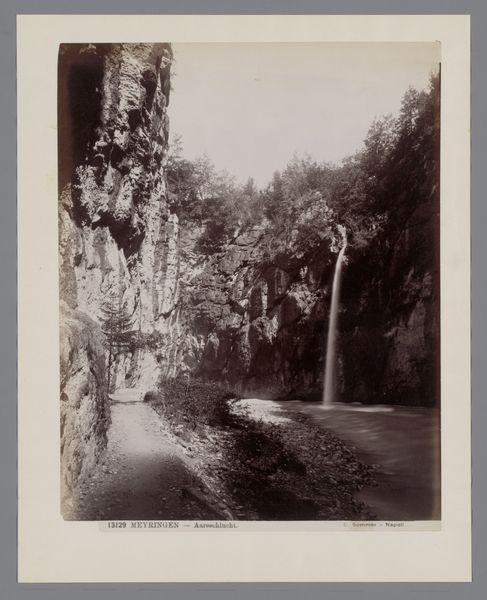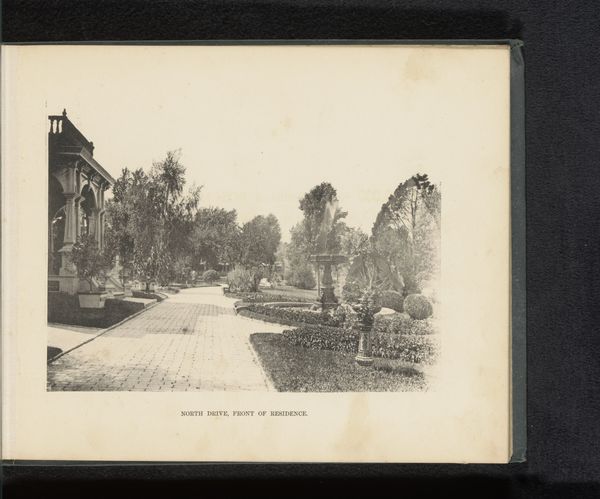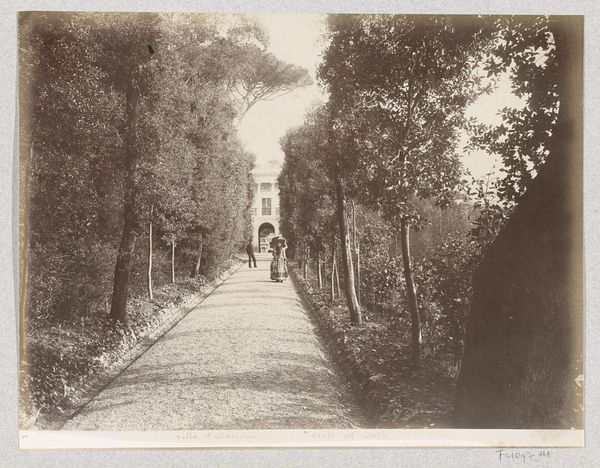
print, photography
# print
#
landscape
#
street-photography
#
photography
#
orientalism
Dimensions: height 118 mm, width 163 mm
Copyright: Rijks Museum: Open Domain
Curator: This photograph, entitled "Bezoek aan de leprozerie Pelantoengan," translating to "Visit to the Pelantoengan leprosarium," was captured by Otto Hisgen sometime between 1931 and 1935. Editor: It's incredibly stark. Even with the soft sepia tones, the composition feels almost clinical. There's a structured pathway, almost sterile looking despite the surrounding foliage, guiding the eye towards those figures. Curator: Yes, the composition leads us through this very controlled environment. Hisgen, through his work, captured slices of life within what was then the Dutch East Indies. He offered, inadvertently or not, visual data points regarding the architecture, dress, and societal norms present in the area. Editor: The societal norms are what strike me. These figures, presumably visitors based on the title, are meticulously dressed in stark white, creating a sharp contrast against the backdrop and the potential inhabitants. It speaks volumes about power dynamics, about visibility and invisibility. Where is this place, the leprosarium, in the collective colonial conscious, hidden? Revealed? Both? Curator: Indeed. Hisgen's collection touches upon aspects of colonial society frequently overlooked in official portrayals of the era. There's a detached curiosity, certainly present but not actively editorialized within the images, leaving interpretation largely to us. The presence of leprosy and Hansen's disease within the visual narrative provides insight into public health infrastructures during colonial times as well as its absence. Editor: It's like he's asking us to consider, even decades later, our own positionality within this history, isn't it? As viewers, how do we engage with the visible realities of such a deeply unbalanced power structure as presented through this single photographic frame? What voices were encouraged or discouraged in these visual landscapes and how does that influence contemporary narratives? Curator: And where might future inquiry take us? Hopefully towards deeper decolonization of these narratives. Editor: Agreed. This image sparks critical questions about colonial medical practices, representations of illness, and the subtle yet pervasive visual language of the era. Curator: A silent frame that reverberates with complexities we can only begin to uncover, hopefully urging more research.
Comments
No comments
Be the first to comment and join the conversation on the ultimate creative platform.
